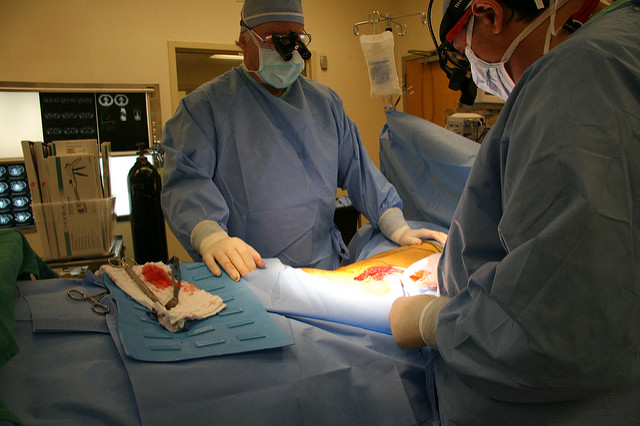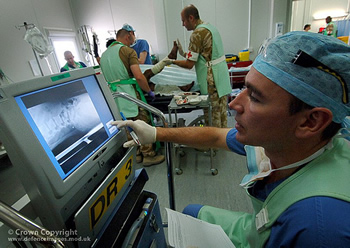Anatomy and Physiology – Final Project on Health Procedures
Introduction: Throughout your life you will visit doctors and other health technicians whose job it is to keep you healthy and diagnose problems. You are probably familiar with getting a basic physical or getting your vaccines. There may even be other procedures that you have experienced, such as MRI’s or surgery, or even setting a cast. The health field has many branches and many diagnostic tools. When you go into a hospital because you are sick or injured, doctors may order a variety of tests and procedures to help you get better.
In this project, you are going to pick any health procedure and design a powerpoint presentation to teach the class about it. You can pick a procedure that you are already familiar with, or find one that is just interesting to you. Some examples are:
- MRI
- CAT Scans
- Kidney Dialysis
- Chemotherapy (cancer treatments)
- Stress Test on Heart
- Cataract Removal
- Gall Bladder Surgery
- Transplants (general or a specific organ)
- Tonsils Removal
- Wisdom Tooth Extraction
- Colonoscopy
Step One: Choose Your Topic and Group Organization
Your project can be done individually or in a small group. No more than four in a group (no exceptions)
If you don't know where to start, check out the list of medical procedures performed at these hospitals. You do not have to pick one from these lists, but it can help get you started. Have your topic approved before proceeding.
- Washington University School of Medicine Medical Services
- Barnes Jewish Hospital Medical Services
- St. Anthony's Medical Center
Step Two: Research
You will need to look into your procedure carefully to set up your presentation. It is not appropriate to just copy and paste information from a hospital website (though it is okay to start there.) Use google or other search engines to look into your subject matter.
Two websites that may be helpful: Webmd | Medicinenet.com
There are three main sections to your project that your group will be graded on. How you organize your group to research your project is entirely up to you. You can add any additional information you feel appropriate. The questions below are just a guideline to help you organize information.
1. Analysis of health problem
- Why would you need this procedure? What health problem does it solve or prevent?
- What would happen if you needed this procedure and you didn't have access to it?
-Who usually gets this procedure done, is there a specific group that it is more common in (children, the elderly, etc)
-is it a diagnostic procedure (preventative) or it is used to fix a problem or cure a disease?
2. Description of the procedure
- Where is the procedure performed (doctor's office, hospital..etc)
- Who performs it (doctor, nurse, technician, surgeon..)?
- What equipment is needed?
- What preparations are needed by the patient?
- What are the risks of the procedure, or what is the likely outcome or prognosis?
3. Personal Accounts
- How does it feel to get this done, does it hurt, is it embarrassing..etc ?
- What can be done to make the procedure easier on a person?
- Is this a procedure that will improve a person’s life, is it something you would encourage a person to do as preventative medicine?
- How would you convince your mom/dad/sibling to get this procedure done? (may not be appropriate on all topics)
Step Three - Design
Your presentation will be done as a powerpoint. You can use microsoft office, if it is available on your computers, or you can use docs.google.com which will also make a powerpoint presentation (and even store it online for you) - requires account registration.
Some guidelines to making your powerpoint presentation.
- Do not copy/paste a lot of medical jargon, consider your audience. Keep the slides simple and direct.
- Use images appropriate. No images will make your presentation dull, but images used in the right place can help you explain and illustrate your topic.
- Do not include too much information on one slide, a presentation is designed to be delivered in bite-sized pieces.
- Avoid using too many bells and whistles. Too many animations, noises and transitions can be distracting. This also applies to choosing a background theme that is not too cluttered.
- Use a spell check to avoid grammar mistakes that will detract from your overall grade.
- Make sure your slides flow in a logical way.
- It is very tempting to place video on your presentation, and videos certainly can help illustrate a procedure. A video, however, should not take the place of your own content. Also videos can be very large and hard to send, so if you want your audience to see a video, it should be no longer than 3 minutes and use a LINK rather than placing the video within your presentation.
Step Four - Presentation and Submission to Teacher
Depending on time, you may be presenting to the class, though this is an end-of-year project, so you may end up just sending the powerpoint to your teacher for evaluation through email or Google Classroom . Check specific details on this with your instructor.
Grading Rubric & Checklist
| 1 pt | 2 pts | 3 pts | 4 pts | ||
| Analysis | Description of the health problem is detailed | ||||
| Audience understands fully why it is important to get this procedure done as either prevantative or treatment for a problem | |||||
| The person performing the procedure is described with regards to their medical qualifications | |||||
| Description | Description is detailed, audience would have a very good idea what to expect if they were getting this procedure done | ||||
| Preparations and risks of the procedure are addressed | |||||
| Detailed description of equipment used (or if no equipment, what a health professional will be doing to perform it) | |||||
| Specific anatomical descriptions of what is happening during the procedure | |||||
| Personal Accounts | Audience has a clear sense of how it feels to get this done | ||||
| The importance of the procedure to improve a person's life is discused | |||||
| Overall | Powerpoint is creative, has solid organization, images and transitions are used appropriately | ||||
Total (out of 40) = |
|||||


